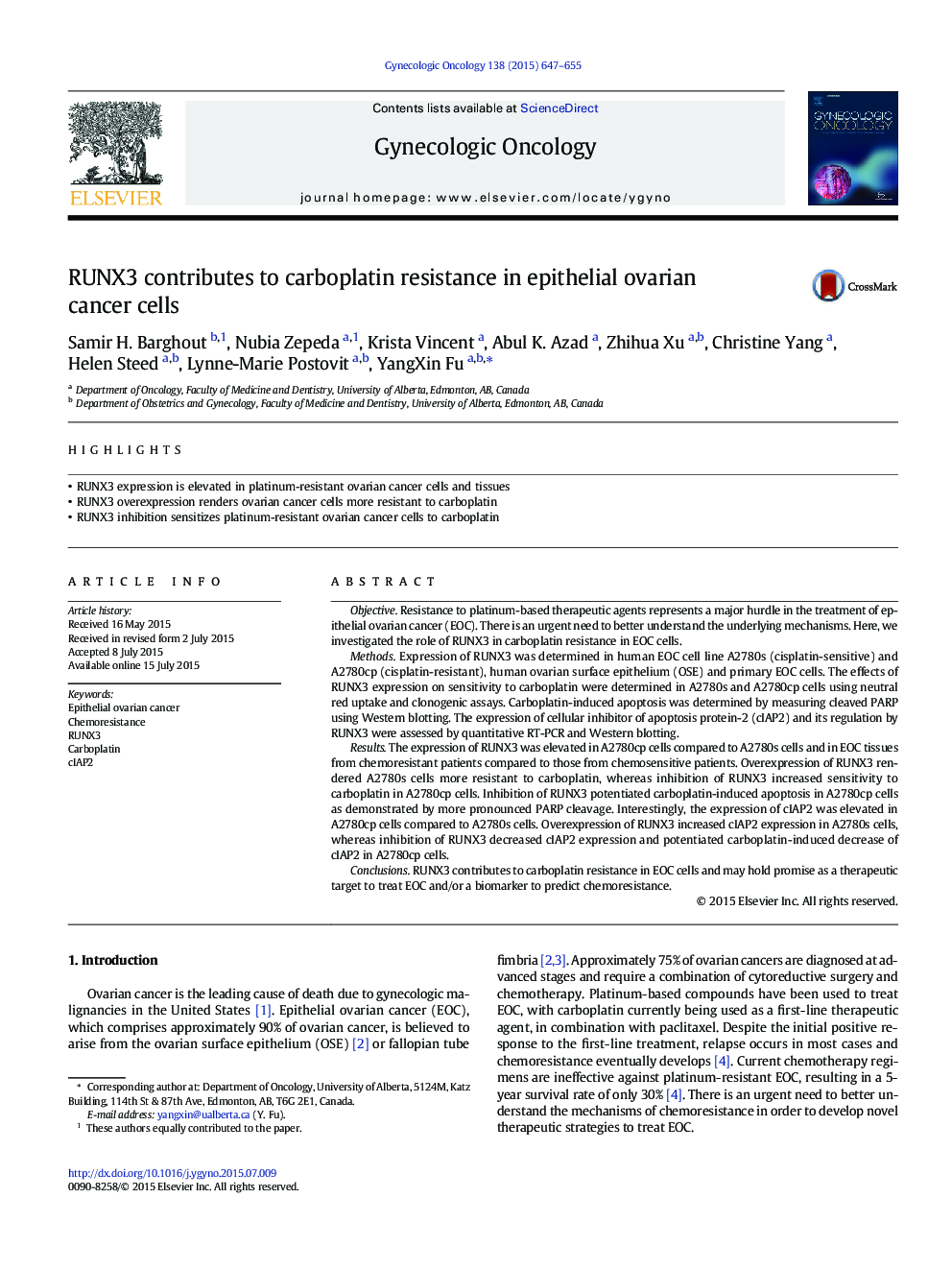| Article ID | Journal | Published Year | Pages | File Type |
|---|---|---|---|---|
| 3942664 | Gynecologic Oncology | 2015 | 9 Pages |
•RUNX3 expression is elevated in platinum-resistant ovarian cancer cells and tissues•RUNX3 overexpression renders ovarian cancer cells more resistant to carboplatin•RUNX3 inhibition sensitizes platinum-resistant ovarian cancer cells to carboplatin
ObjectiveResistance to platinum-based therapeutic agents represents a major hurdle in the treatment of epithelial ovarian cancer (EOC). There is an urgent need to better understand the underlying mechanisms. Here, we investigated the role of RUNX3 in carboplatin resistance in EOC cells.MethodsExpression of RUNX3 was determined in human EOC cell line A2780s (cisplatin-sensitive) and A2780cp (cisplatin-resistant), human ovarian surface epithelium (OSE) and primary EOC cells. The effects of RUNX3 expression on sensitivity to carboplatin were determined in A2780s and A2780cp cells using neutral red uptake and clonogenic assays. Carboplatin-induced apoptosis was determined by measuring cleaved PARP using Western blotting. The expression of cellular inhibitor of apoptosis protein-2 (cIAP2) and its regulation by RUNX3 were assessed by quantitative RT-PCR and Western blotting.ResultsThe expression of RUNX3 was elevated in A2780cp cells compared to A2780s cells and in EOC tissues from chemoresistant patients compared to those from chemosensitive patients. Overexpression of RUNX3 rendered A2780s cells more resistant to carboplatin, whereas inhibition of RUNX3 increased sensitivity to carboplatin in A2780cp cells. Inhibition of RUNX3 potentiated carboplatin-induced apoptosis in A2780cp cells as demonstrated by more pronounced PARP cleavage. Interestingly, the expression of cIAP2 was elevated in A2780cp cells compared to A2780s cells. Overexpression of RUNX3 increased cIAP2 expression in A2780s cells, whereas inhibition of RUNX3 decreased cIAP2 expression and potentiated carboplatin-induced decrease of cIAP2 in A2780cp cells.ConclusionsRUNX3 contributes to carboplatin resistance in EOC cells and may hold promise as a therapeutic target to treat EOC and/or a biomarker to predict chemoresistance.
